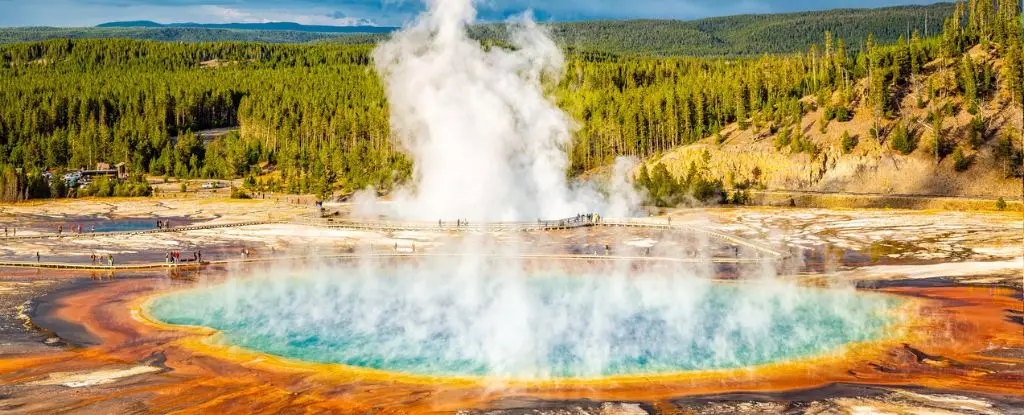For nearly a century, scientists have been aware of single-celled organisms capable of emitting methane gas into the environment. These microorganisms, known as methanogens, have long been associated with the superphylum Euryarchaeota within the Archaea kingdom. However, recent discoveries have revealed the existence of methane-producing microbes outside of this well-known group. Researchers have identified new members of the phylum Thermoproteota that possess the ability to generate methane, challenging our previous understanding of methanogen diversity.
Cultivating Microbial Suspects in the Lab
In a groundbreaking development, two separate research teams in China and the United States have successfully cultured these novel methane-producing microorganisms in laboratory settings. One group of researchers collected samples from the hot springs of Yellowstone National Park, discovering two distinct methane-generating prokaryotes belonging to the Thermoproteota phylum. These microbes, identified as Methanomethylicia and Methanodesulfokora, were able to thrive in oxygen-deprived environments by converting methanol into methane, showcasing their unique metabolic abilities.
In a parallel study, scientists from China’s Biogas Institute and Wageningen University identified another methane-producing microbe, Methanosuratincolia, in an oil field in China. Through extensive research, the team confirmed that this newly discovered microorganism’s energy metabolism is intricately linked to methane production. These findings underscore the growing realization that the diversity of methanogens extends beyond the traditional Euryarchaeota group, shedding light on the vast array of microbial species contributing to methane emissions on Earth.
Methanogens play a critical role in the global methane cycle, surpassing volcanic activity as the primary source of methane production on our planet. With methanogens like Methanomethylicia, Methanodesulfokora, and Methanosuratincolia being found in diverse environments worldwide, scientists believe that these microorganisms play a pivotal role in regulating methane emissions and influencing the carbon cycle. Despite their significance, many questions remain unanswered about these microorganisms, including the conditions under which they produce methane and the factors influencing their growth and metabolism.
Microbiologist Roland Hatzenpichler from Montana State University emphasizes the need for further research to understand the complexities of methanogen behavior. While some methanogens may exhibit methane production consistently, others may showcase different metabolic functions depending on their environment. The enigmatic nature of these methane-generating microorganisms highlights the ongoing scientific inquiry into their growth patterns, metabolic pathways, and ecological roles on Earth.
The discovery of diverse methane-producing microorganisms outside the Euryarchaeota group challenges the conventional perception of methanogen diversity. By cultivating and studying these novel microbes, researchers are unraveling the intricate mechanisms of methane production in various environments, offering valuable insights into the global methane cycle and carbon sequestration processes. As our understanding of methanogen behavior continues to evolve, future studies will undoubtedly uncover more surprises and complexities within this critical group of microorganisms.


Leave a Reply